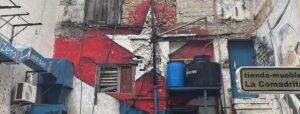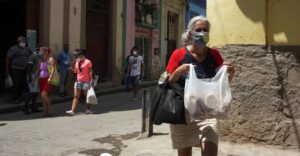By Geoff Thale
The visit of Pope Benedict XVI to Cuba in late March will serve as an indicator of just how much church-state relations in Cuba have improved in recent decades. It will also draw attention to the economic and political changes that have taken place under the leadership of President Raul Castro.
It hasn’t been so visible on our radar screen here in the United States, but changes in the role of the religious community, in the political process, and in the economy have been taking place in Cuba. While important concerns about human rights and freedom of expression remain, the Cuba of today is different from the Cuba visited by the previous pontiff in 1998.
During Pope Benedict’s visit, we’ll see the evidence of these ongoing changes. Restrictions on religious freedom have been eased, and the role of the churches is changing. Political prisoners have been released. (There were approximately 100 political prisoners released through the fall of 2011, and in late December the Cuban government announced that 2,900 prisoners, including some classified as political prisoners, would be released as a gesture in advance of the Pope’s visit.) At the same time, the Cuban government and the Cuban Communist Party are taking steps to revive the economy, including moving toward a mixed, public-private model.
The visit will highlight the new role of the Catholic Church in Cuba, where it is playing an important role in the process of the country’s long-awaited political opening. Overall, the environment for religious freedom in Cuba has improved in the last two decades. Pope John Paul II’s 1998 trip underscored these changes—the Pope met with active Catholic, Protestant, and Jewish communities then. Those communities, along with evangelicals and Afro-Cuban religious traditions, have only gained ground in the last decade.
In recent years, the Catholic Church leadership has been involved in direct dialogues with the Cuban government; it was particularly effective in discussions that led to the release of political prisoners last year. The Church’s role hasn’t been confrontational or openly political. It has expressed pastoral concerns about Cuban society, and its conversations with the government have led to constructive outcomes.
When Pope John Paul II visited Cuba in 1998, he called on Cuba to open to the world, and he called on the world to open to Cuba. It is clear today that Cuba is beginning to open economically, and we have seen at least some gestures that suggest it might be opening politically. By now, most of the world has opened to Cuba. Most U.S. allies have normalized relations with the island and are pursuing strategies of engagement rather than isolation. Even the Cuban-American community, which has traditionally taken the hard line against openness to Cuba, is beginning to relax its stance. In 2011, Cuban-Americans made an estimated 400,000 visits to Cuba and send hundreds of millions of dollars to family members there; discussions are already underway in Miami about pilgrimages to Havana for the papal visit. This is a dynamic moment for Cuba’s relationship with the rest of the world. But, as the Pope’s visit will remind us, the U.S. government seems determined to be left behind.


